By Tony Cook/Photos by the Author
Introduced in the early 1960s, The Lindberg Line of HO-scale model trains is a modest group of releases (and non-releases) that nonetheless forged an interesting legacy in the hobby. Paul Lindberg established the namesake company in the early 1930s and served many hobby categories, most notably the plastic kit market for ships, planes, and vehicles. For 1962, Lindberg expanded into HO-scale model railroad products.
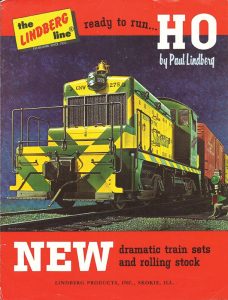 The mid-1950s through the early-1960s was a popular period for companies to expand into HO. Major factors were the arrival of injection-molded plastic enabling efficient and inexpensive model production, and the decline in of O (1/48th) in favor of HO (1/87). The traditional favorite in model railroading through up to World War II had been O-gauge (both scale, and 3-rail or hi-rail), but its popularity began to shrink in the 1950s. Smaller-sized HO trains expanded rapidly in the years after the war and became the industry leader by the 1960s, a position the scale continues to enjoy today.
The mid-1950s through the early-1960s was a popular period for companies to expand into HO. Major factors were the arrival of injection-molded plastic enabling efficient and inexpensive model production, and the decline in of O (1/48th) in favor of HO (1/87). The traditional favorite in model railroading through up to World War II had been O-gauge (both scale, and 3-rail or hi-rail), but its popularity began to shrink in the 1950s. Smaller-sized HO trains expanded rapidly in the years after the war and became the industry leader by the 1960s, a position the scale continues to enjoy today.
The Beginning
For its day, Lindberg’s selection presented a good-looking series of models. Lindberg debuted with a full-color four-page catalog illustrating its diesel switcher and nine rolling stock offerings. This 1962 catalog was the only color-illustrated example of this type of promotional material known to come from Lindberg. Investigation in the line revealed Paul Lindberg saw the growing interest in HO model trains at the time and sought his company’s participation. One designer did the work for the entire line and reportedly moved on to other projects not long after, never to return to the world of HO trains.
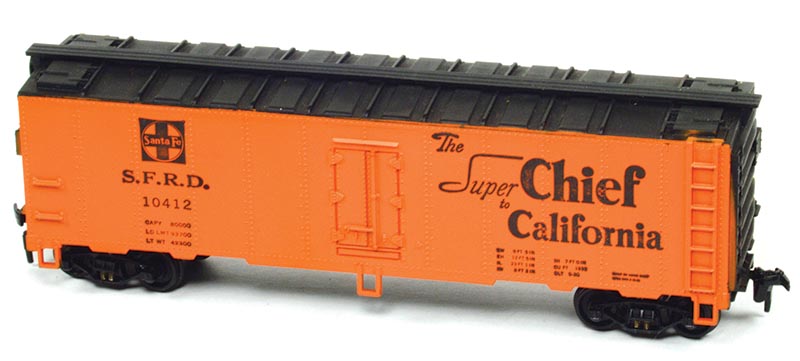 Santa Fe refrigerator car with “Super Chief” advertising.
Santa Fe refrigerator car with “Super Chief” advertising.
The freight cars presented a typical mix necessary to establish a well-rounded fleet of steam-to-diesel era examples that was typical of any-and-all train lines of the period. A 40-foot sliding door boxcar seemingly requisite for every manufacturer joined an ice-hatch refrigerator car, stock car, flatcar, gondola, tank car, hopper car, and caboose. In Lindberg’s advertising, the flatcar does double duty serving as the line’s 40-ton flatcar with stakes, decorated for The Milwaukee Road, as well as a 40-ton flatcar with U.S. Navy-lettered crates load, decorated for Rock Island. The other freight cars used unique shell toolings with underframe components crossing over between the releases. No variety in road names is present as each car type includes one style of decoration.
 This 40-foot flatcar model includes crates lettered for the U.S. Navy.
This 40-foot flatcar model includes crates lettered for the U.S. Navy.
No additions joined Lindberg’s freight car line and in fact, two of the cars promoted never existed as Lindberg items. Of Lindberg’s announced 1962 freight cars, the manufacturer is not known to have ever delivered its hopper or tank car. The two-bay open coal hopper car model (#T113, MSRP: $1.98) presents a revised “war emergency” prototype with steel exterior framing and ends, and metal panel sides. Lindberg shows this model with coal load and lettered in white for Wabash. The other non-arrival is the single-dome tank car; Lindberg illustrated this model (#T114, MSRP: $2.49) decorated for Mobilgas.
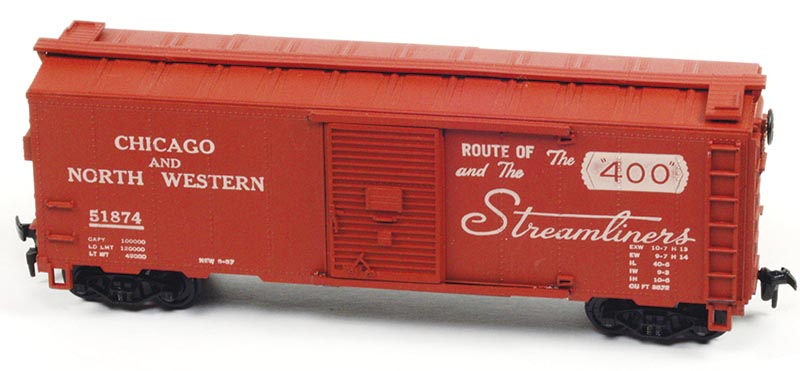 The ubiquitous AAR 40-foot boxcar.
The ubiquitous AAR 40-foot boxcar.
Lindberg Line’s EMD SW600 Switcher
The only HO-scale diesel locomotive model Lindberg released was an Electro-Motive Division (EMD) switcher. Pictured on the front of Lindberg’s catalog, kit boxes, and train set box lid, this little diesel switcher is in many ways the face of the company’s model railroad line. Although this switcher officially carried the designation SW600, the tooling actually more closely represents EMD’s earlier SW1.
EMD produced only 15 examples of the SW600 from its early 1954 introduction through its 1962 conclusion of availability. Of major railroads, only Chicago & North Western rostered this 600-hp switcher with two examples (1280-1281). The other owners were industrial customers, such as Northern Indiana Public Service, Gulf Oil, Texaco, and Public Service Company of Colorado. In contrast, the SW1 enjoyed much more popularity during its production period of 1938 to 1953, and many railroads owned SW1s. Lindberg’s famous artist rendering of the C&NW switcher accurately depicts an SW1 and even shows it correctly numbered as 1275, which was a genuine Chicago & North Western SW1. Lindberg’s two other cataloged switcher road names included Baltimore & Ohio (B&O) and Santa Fe. Of those roads, the B&O did own SW1s, however Santa Fe did not.

There is one switcher release Lindberg never cataloged, a black Illinois Central switcher with the road’s Green Diamond herald. The Illinois Central road name is listed in a 1968 Lindco Industries product flyer, but I can’t confirm it was available at that point in time. I’ve read reference to an Illinois Central train set offered as a promotion by the railroad in the 1960s. I have not confirmed this information, but have seen the gondola, boxcar, and caboose that appear to be other pieces included in such a set, and all feature Illinois Central markings. I have also observed this switcher in a Lindberg window box with accurate and authentic-looking labeling on the end flap suggesting it is legitimate. The stock number on these Illinois Central switcher models is L153, which would place it right after the cataloged trio of road names’ L150-to-L152 stock numbers.
Regarding the SW600 versus SW1 discrepancy, such incorrect labeling of a model compared to its prototype was not an uncommon situation for this time. Whether by simple accident or mistake, or genuine confusion, you’ll find other examples of a diesel model that looks like one thing and is labeled for another. Mantua-TYCO sold its F-unit for years, beginning in 1960, as an “F9A.” In reality, the Mantua-TYCO shell is an F7A. Athearn introduced a SW1500 in 1966, however, the shell is actually an SW7. I’ve debated at times that one possible scenario could be a hobby company’s desire to have the latest diesel on the market, but by the time the HO version was ready to roll into hobby shops a newer prototype was rolling on the rails. This is only conjecture on my part and I’ve never had this confirmed for any examples.
 The Lindberg Line switcher shell is made of multiple parts. This is a common design approach today, but not typical for diesel locomotive models of this period. The frame and pilots are one piece with handrails molded on. The handrails present a good, and not terribly far from scale appearance, given the age of the model. Residing on the frame are the cab and long hood sections. The cab includes molded-on shades on the side windows a rare feature for diesel models of this vintage, which adds to the attractiveness of Lindberg’s effort. Molded into the long hood on both sides of the unit is a handrail, with grab irons included on the fireman’s side as found on the prototype.
The Lindberg Line switcher shell is made of multiple parts. This is a common design approach today, but not typical for diesel locomotive models of this period. The frame and pilots are one piece with handrails molded on. The handrails present a good, and not terribly far from scale appearance, given the age of the model. Residing on the frame are the cab and long hood sections. The cab includes molded-on shades on the side windows a rare feature for diesel models of this vintage, which adds to the attractiveness of Lindberg’s effort. Molded into the long hood on both sides of the unit is a handrail, with grab irons included on the fireman’s side as found on the prototype.
The hood features a scale 7-foot width, but its length is too long for an SW1 or an SW600. The model hood’s length is 23 feet, while an SW1’s long hood is approximately 21 feet. Including the sand storage bins on the pilot and the end of the hood, Lindberg’s model does come very close to matching the SW1’s length, but you’ll notice the sand storage bins are very stubby in appearance on the model. The overall length, measuring from the outer edge of each pilot and not including footboards, is 38-1/2 feet for Lindberg’s switcher, leaving the model undersized by almost two scale feet. Other shell dimensions check out well: the cab height, width, and roof curvature look and measure well in comparison to the prototype. The end pilot area lacks the compression suffered by this switcher’s front end.
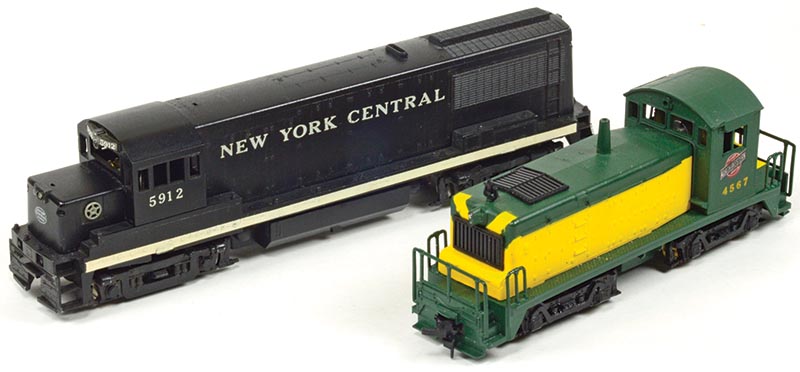 What might have been… Lindberg’s EMD SW600 diesel switcher sits next to the manufacturer’s never released GE U25B diesel locomotive.
What might have been… Lindberg’s EMD SW600 diesel switcher sits next to the manufacturer’s never released GE U25B diesel locomotive.
Another point of interest was Lindberg’s choice to mold this switcher’s shell pieces in Delrin, even though the rest of the rolling stock in the line was injection-molded plastic. Lindberg’s use of DuPont’s Delrin (now known as Celcon M-90) made Lindberg’s trucks among the better performing examples of their day. Delrin originally saw application in the food industry, with Delrin bearings used in conveyor belt systems at food production plants. The non-friction nature of the product allowed lessened the need for lubricants that would attract dust and other debris unwanted in the machinery used in food production. Lindberg’s used this plastic-like material for the truck sideframes, as well as components in the diesel switcher. Other model railroad companies employed Delrin for couplers and trucks due to its positive properties, but research indicates Lindberg may possibly be the first hobby manufacturer with Delrin-molded items.
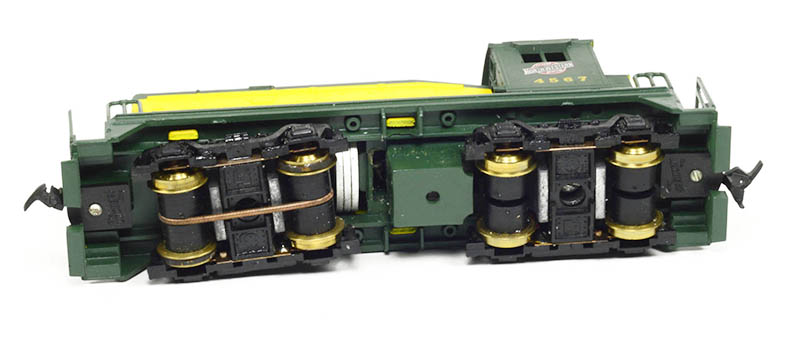 Another positive for this diesel switcher’s design is the inclusion of body-mounted couplers. A separate coupler pocket cover is screw-mounted to the frame and Lindberg provided X2f couplers for this and the rest of the models in its line. The front- and rear-pilots include detail with molded-on coupler cut lever and pilot handrail.
Another positive for this diesel switcher’s design is the inclusion of body-mounted couplers. A separate coupler pocket cover is screw-mounted to the frame and Lindberg provided X2f couplers for this and the rest of the models in its line. The front- and rear-pilots include detail with molded-on coupler cut lever and pilot handrail.
A bag of molded plastic parts provided the hobbyist with interior and underframe detail items, as well as parts for an oiler. The interior details include two blocks with locator pins molded on the base to snap into the frame inside the cab below each window. In that block went a seat with locator pin to plug into a hole on the block; engineer and fireman figures were included to sit on the seats. Also present in the bag were two tanks for placement on the underframe on each side between the trucks. Locator pins on the tanks mount into two holes on each side of the frame to secure the tanks in place. The oiler for lubricating the mechanism included a black end cap and pointed tip. A clear tube went between these two parts and Lindberg’s supplied literature instructed the hobbyist to cut the tip to allow oil to flow. The inclusion of the oiler parts is a unique feature and often missing in samples observed today.
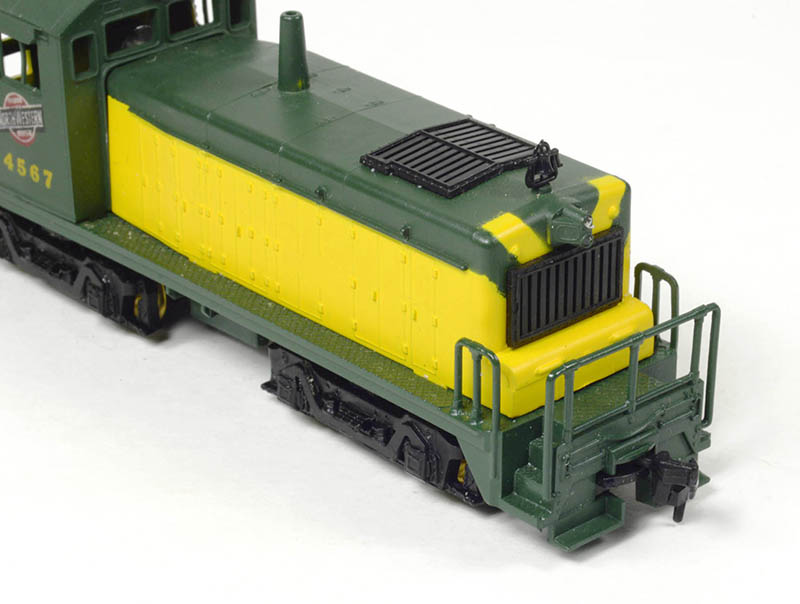 Detail parts are in black hue – simply the color of Delrin mixture – on examples I’ve encountered. The two end cab door access handrails, air horn, bell, and top- and front-grill comprise the black Delrin pieces on Lindberg’s switcher. Collectors should carefully examine samples considered for purchase to confirm the presence of the single air horn on the cab facing over the windows, a bell at the front end of the long hood, and two handrails leading on each side of the access door on the rear of the cab. All these items are fragile and often missing.
Detail parts are in black hue – simply the color of Delrin mixture – on examples I’ve encountered. The two end cab door access handrails, air horn, bell, and top- and front-grill comprise the black Delrin pieces on Lindberg’s switcher. Collectors should carefully examine samples considered for purchase to confirm the presence of the single air horn on the cab facing over the windows, a bell at the front end of the long hood, and two handrails leading on each side of the access door on the rear of the cab. All these items are fragile and often missing.
The AAR-type switcher truck sideframes also appear molded from Delrin. Though they appear undersized, the distance between center axles is an accurate 8-foot spacing. The sideframes are short in total length by approximately one foot, which is where the tooling receives its compressed look.
The drive mechanism resides in the front end of the model’s unit and powers the lead truck. All axles are electrical receptors to power the motor. This switcher is no lightweight! Though many diesel releases of the time feature rather puny motors and little weight, Lindberg’s switcher hits the scale at 9-1/2 ounces, which is the same weight found for Walthers recent Mainline SW1 release. The drive uses a coil belt running from the motor down under both of the axles. Illumination for this model is available only at the front end on the long hood. I found clear lenses on the front light; however I do not see them present on the rear light and Lindberg’s exploded parts diagram shows reference to front lenses only.
For the collector, the Lindberg Line offered service kits with a variety of replacement parts for use on its diesel switcher model. If you can locate one in good condition (they do surface with some frequency), they make an interesting addition to one’s collection. Presumably sold to hobby shops, service kits that I’ve seen appear to include nearly enough parts to construct a complete switcher model. These service kits usually come in clear plastic boxes that resemble a fishing tackle box.


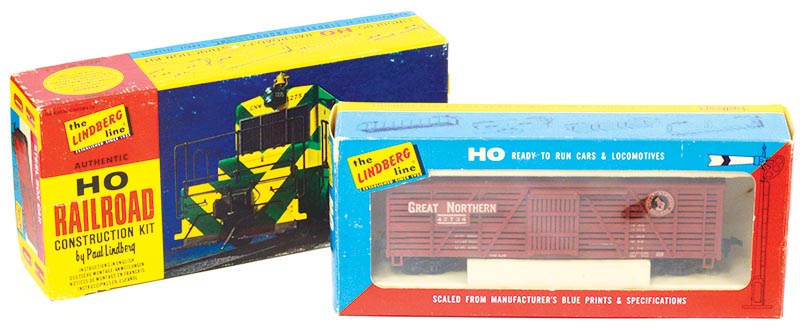
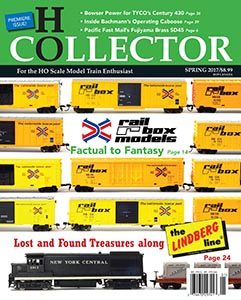 Read the rest of this feature in the Premiere Issue of HO Collector!
Read the rest of this feature in the Premiere Issue of HO Collector!